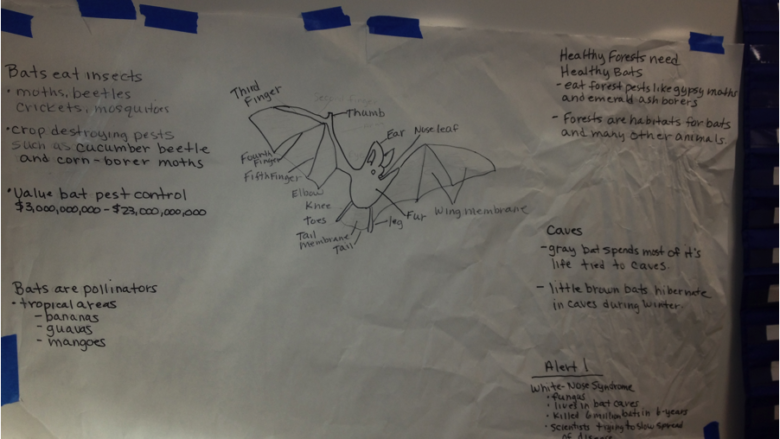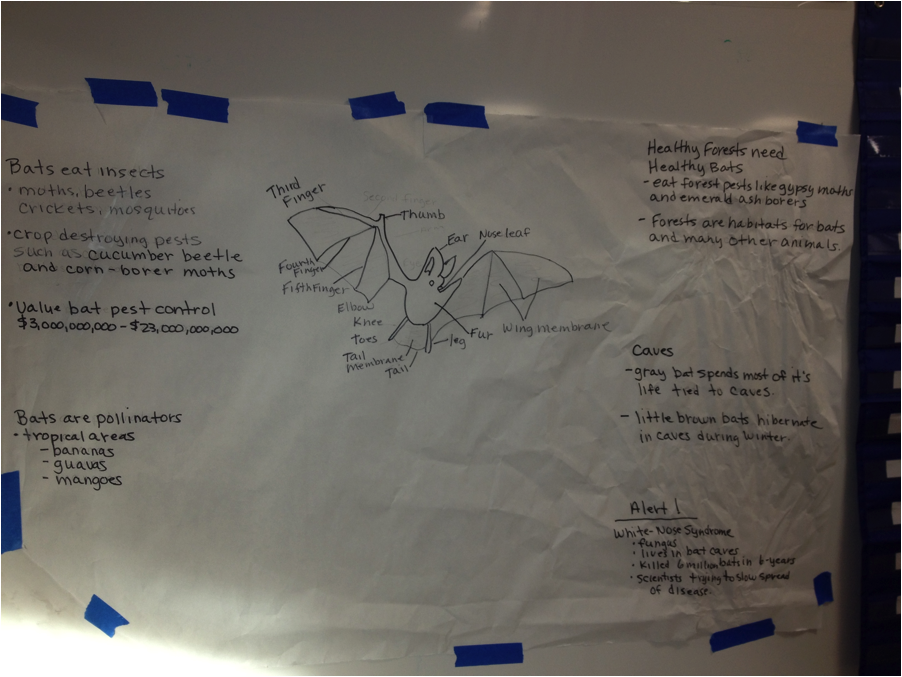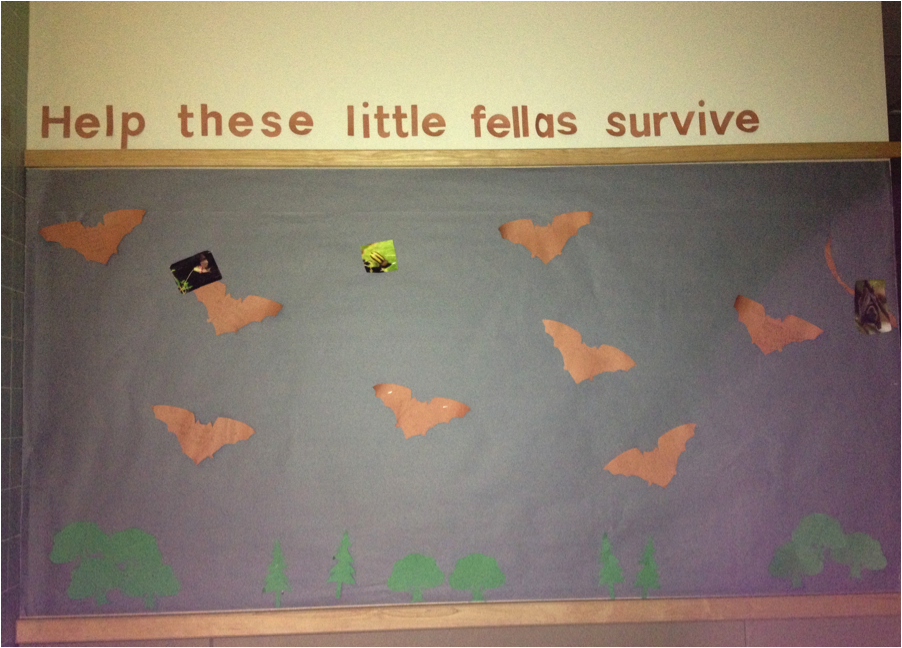The Climate Resiliency Fellows is a program of the Nisqually River Foundation, South Sound GREEN and Chehalis Basin Education Consortium. After the annual Summer Teacher Institute, the Fellows meet quarterly to talk climate science, explore new curriculum and support each other in bringing climate change education into the classroom. Becky Hendrickson, a special education teacher and Climate Resiliency Fellows, used inspiration from the last quarterly meeting to implement a climate change themed lesson in her classroom. Thanks for sharing your experience, Becky!
Our last meeting inspired me to do a mini lesson on bats. Last summer I attended a training on Guided Language Acquistion Design (GLAD). The strategies are geared towards ELL students but the visual strategies are very applicable for my students on the autism spectrum. I created this input chart from the information obtained from resources shared at our last meeting. Students used information from the input chart to create the bulletin board displayed during bat week/conference week in October. You can’t see it on the photos but students wrote bat facts on each of the little brown bats. We really rushed to get the project completed for bat week. Next year I’d like to spend more time and see if we get a more finished product. Regardless, my students walked away from the project with new appreciation for bats and hopefully observers of the bulletin board did as well.
I am a special education teacher in a self-contained classroom service students 1st – 5th grades. The class focuses on social skills so the majority of my students are on the autism spectrum. I wanted my students to participate in a project that would bring all students together regardless of their grade and/or ability levels. I decided to have students complete a penguin project using a unit from GLAD. Studying penguins naturally led into an investigation on climate change for my 4th and 5th grade students. In addition to the GLAD unit, my students conducted a penguin nest study from penguinscience.com. The scientists post photos of 10 nests at Cape Royds in Antarctica.
On January 4th, one of my students was checking his nest and discovered that the penguin chick had died. He was very upset and began searching the other 9 nests. He discovered that several eggs hadn’t hatched and many chicks had died. He wanted to know why. After some discussion, he asked if this always happens. We found archived data and the student began collecting the data (see table below).
| Year | Eggs Hatched | Chicks Survived |
| Jan 4, 2017 (2016/2017) | 72% | 23% |
| 2015/2016 | 85% | 88% |
| 2014/2015 | 90% | 94% |
| 2013/2014 | 75% | 87% |
As the student was collecting data, he kept asking the question, why are the hatching and survival rates so low? He kept coming back to global warming. Penguinscience.com has a great power point on global warming. I plan on teaching the lesson in a couple of weeks. In the mean time, this student is still analyzing archived data. Over the next couple of weeks, I’ll get the rest of my students looking at the data so they’ll be ready for the global warming lesson as well. I had always planned on using penguinscience.com to launch our study on global warming but it was awesome that a student “discovered” it first.


